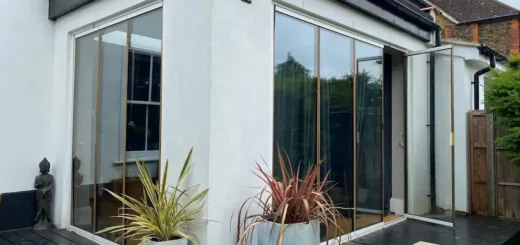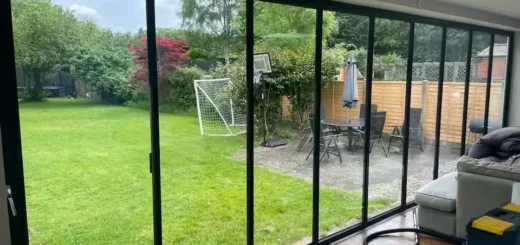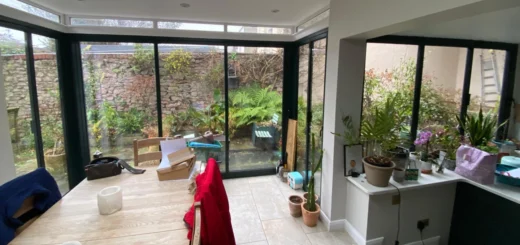Contemporary Bifold Doors: What You Need to Know
Table of Contents
Contemporary Bifold Door Materials and Finishes
Aluminium vs uPVC Frame Materials
Aluminium frames lead the market in modern installations, offering minimal sightlines at just a fraction of the width of uPVC alternatives. The structural strength of aluminium allows for floor to ceiling bifold doors with larger glass panels, while maintaining smooth operation year after year.
Raw aluminium starts as a dull grey metal, but thermal break technology inside contemporary bifold doors prevents cold transfer between the outer and inner frame sections. This internal barrier improves both comfort and energy efficiency, particularly important in British weather conditions.
uPVC frames cost less initially but can’t match the slim profiles possible with aluminium. While modern uPVC manufacturing has improved a lot, these frames generally remain notably wider than metal alternatives. The material suits more traditional property styles rather than the sharp angles and clean edges that contemporary folding doors demand.
Material Performance Comparison
The lifespan of aluminium frames typically extends beyond thirty years, with powder-coated finishes maintaining their appearance despite sun exposure. Though uPVC remains stable in normal conditions, extreme temperatures can cause slight warping over time. Contemporary bifolding doors made from aluminium resist this issue, thanks to the metal’s inherent stability.
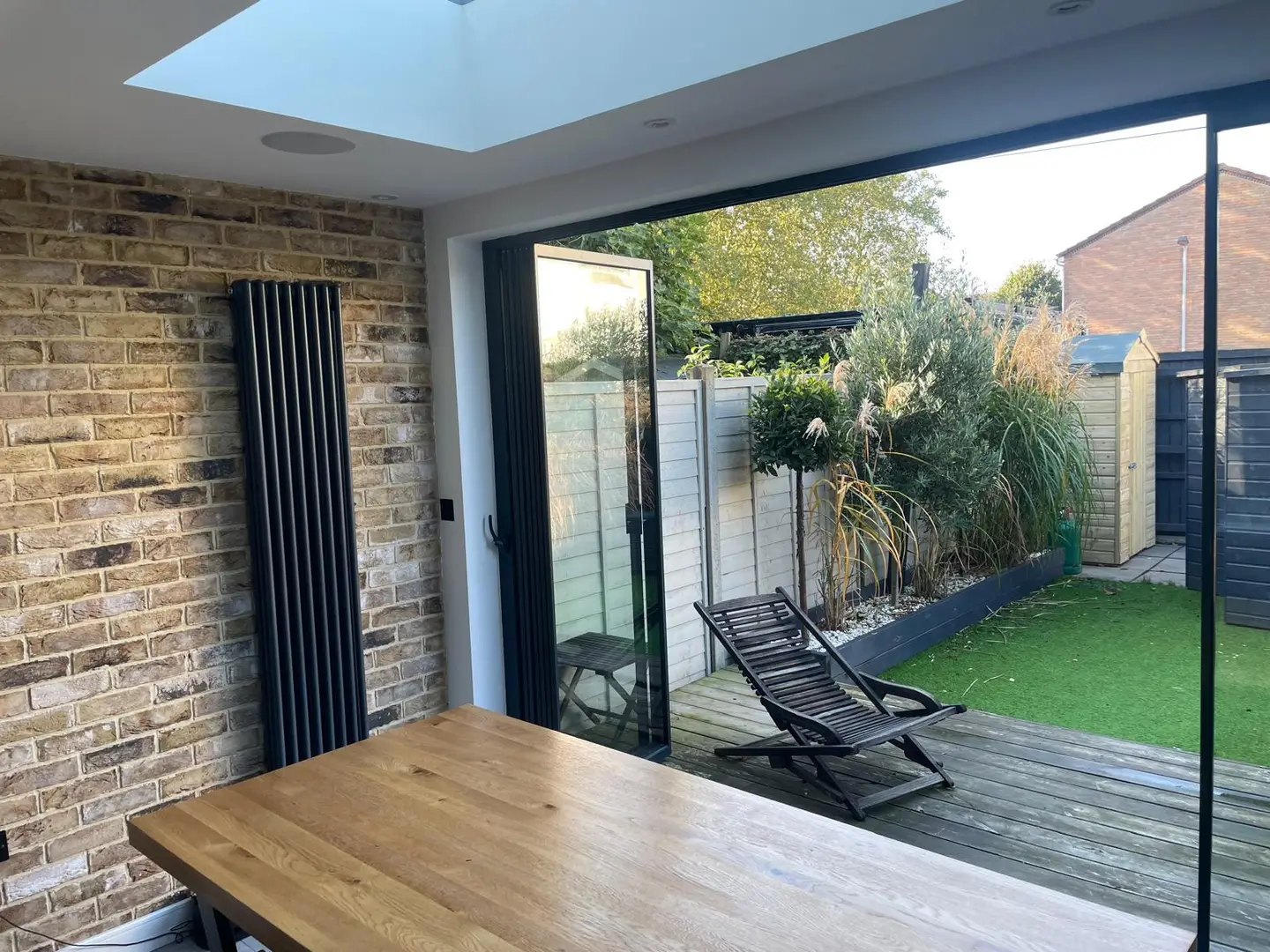
Modern Glass Options for Contemporary Bifold Doors
Double-glazed units remain standard in British living spaces, providing good thermal and acoustic properties. Modern manufacturing allows for larger glass panels that maintain safety standards while reducing the number of frame divisions.
Low-emissivity coatings on modern glass units block UV rays and help retain heat. The coating sits on the inner surface of the outer pane, invisible to the eye but measurably improving thermal performance. Gas-filled spaces between panes add extra insulation without changing the glass appearance.
Security glass combines multiple layers with tough interlayers, meeting current building regulations without compromising on style. Modern toughened glass breaks into small, rounded pieces rather than dangerous shards, providing peace of mind in busy family homes.
Powder-Coated Finishes and Frame Colours
Raw aluminium takes well to powder coating, allowing for precise colour matching across bifold door systems and other architectural elements. The coating process bonds the colour permanently to the metal surface, resisting chips and scratches.
Grey tones dominate current trends, from light silvers through to deep anthracite. These neutral shades work particularly well against both traditional brickwork and modern rendered walls. Textured finishes add subtle depth to frame surfaces while hiding minor marks from daily use.
Metallic powder coatings catch the light differently throughout the day, lending subtle variation to otherwise simple frame designs. The anodised look remains popular, offering a distinctive metallic sheen that suits industrial-inspired home designs.
Design Features of Contemporary Bifold Doors
Modern architectural trends prioritise clean lines and open spaces, pushing the development of more refined door systems.
Frameless and Minimal Frame Designs
Contemporary bifold doors with ultra-slim frames reduce visible metal to just millimetres around each glass panel. Advanced strengthening techniques allow for these minimal profiles while maintaining structural integrity. The reduced frame size increases the glass area, improving natural light levels and views to outdoor spaces.
New frameless systems remove vertical posts between panels entirely, replacing them with structural glass-to-glass joins. These folding partition doors offer unbroken views when closed, with each panel still operating smoothly on precision-engineered runners. Glass edge technology has improved substantially, allowing for exposed edges that resist chips and marks.
Modern track systems sit flush with floor finishes, eliminating step-downs between interior and exterior surfaces. Low-profile thresholds maintain accessibility standards without sacrificing water resistance. Hidden drainage channels protect against driving rain while preserving the minimal aesthetic.
Advanced Opening Configurations
Multi-point locking mechanisms integrate completely within the frame profiles, preserving clean lines while meeting security standards. Contemporary interior bifold doors often feature magnetic catches instead of traditional handles, allowing panels to stack completely flat when open.
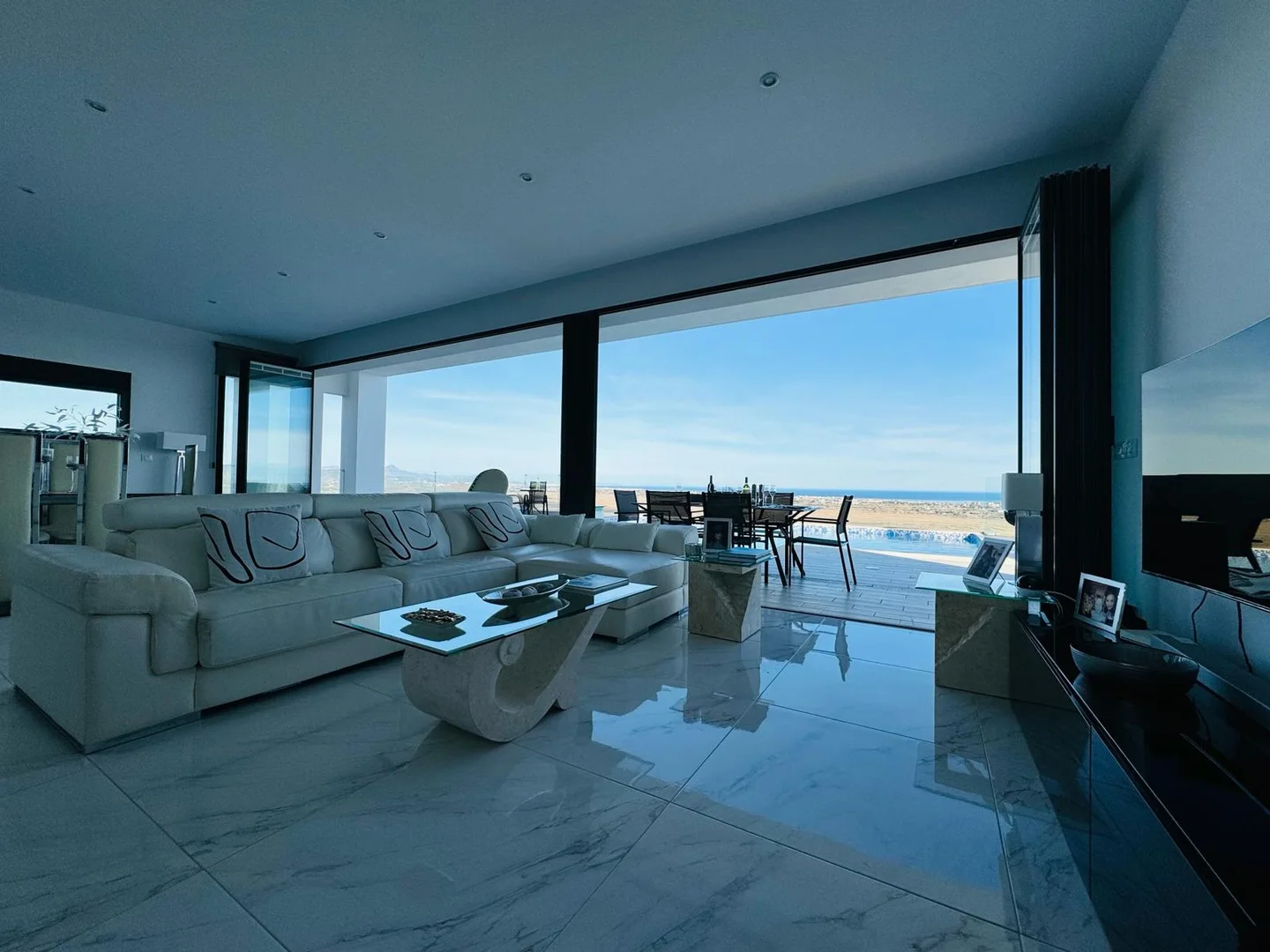
Black Frame Trends in Modern Homes
Matt black frames dominate current design trends, offering striking contrast against light walls and natural materials. The dark finish draws attention to the geometric lines created by contemporary bifold doors, emphasising the architectural character of modern extensions.
Powder-coated black aluminium maintains its depth of colour without fading, unlike painted finishes. The surface texture resists fingerprints and light scratches, keeping its appearance with minimal upkeep. Modern coating techniques allow for slight variations in black tones, from deep charcoal to true black, matching other architectural elements precisely.
Slimline black frames work particularly well in period properties, where they echo traditional steel windows while offering modern performance. The strong linear elements of black contemporary bifolding doors complement original features without trying to mimic historical styles.
Corner Configurations and Panel Sizes
Corner-opening contemporary bi fold doors remove supporting posts entirely, creating spectacular open corners when fully retracted. Structural calculations determine the maximum spans possible, with some systems spanning several metres in each direction. Advanced roller systems manage the increased weight of larger panels while maintaining smooth operation.
Glass technology improvements allow for taller, wider panels in contemporary folding doors. Modern units can span from floor to ceiling, reducing the number of horizontal breaks in the view. Load-bearing calculations dictate the maximum panel sizes, balancing the desire for large glazed areas with practical operation.
Moving glass walls of this size requires carefully engineered running gear. Bottom-mounted rollers carry the weight more effectively than top-hung systems, while maintaining smoother operation over time. Top guides prevent panel sway without bearing the full weight of the glass.
Georgian Style Bifolds
Modern manufacturing allows for Georgian style bifold doors which combine traditional aesthetics with contemporary performance. Georgian bar designs applied to contemporary bifold doors maintain period-appropriate appearances while incorporating the latest thermal and security features. The bars sit between the glass panes, creating authentic shadow lines without compromising energy efficiency.
Astragal bars fixed to the glass surface provide deeper shadows, closely matching original Georgian windows. These applied bars maintain the traditional grid pattern while allowing for easy glass cleaning. Modern bars use aluminium rather than timber, offering improved longevity and reduced maintenance needs.
Contemporary Bifold Door Performance
Modern glazing systems must balance thermal efficiency with security and sound reduction to meet current building standards.
Thermal Efficiency and Energy Ratings
Contemporary bifold doors incorporate multiple technologies to reduce heat loss and lower energy bills. Multi-chamber thermal breaks inside aluminium frames create insulating air pockets, while warm-edge spacer bars between glass panes limit heat transfer around the edges of each unit.
Advanced glass coatings work invisibly to bounce heat back into the room during winter months. These microscopic metal layers sit on the inner surface of double-glazed units in contemporary folding doors, allowing sunlight through while reflecting thermal radiation. The space between panes fills with argon gas, providing better insulation than standard air-filled units.
Modern sealing systems use compressed rubber gaskets at every joint, preventing drafts without impeding smooth operation. The rubber compounds remain flexible at low temperatures, maintaining their shape and performance year-round. Brush seals along the bottom edges sweep against the track during movement, keeping dust and debris out of the rolling mechanism.
Winter Performance Features
Thermal imaging reveals how cutting-edge designs prevent cold spots around frames and meeting points. Contemporary bifolding doors use overlapping frame sections and multiple contact points between panels, creating layers of defence against winter weather. The frame design channels any water that does penetrate to hidden drainage paths, protecting internal finishes.
Sound Insulation for Urban Homes
Living near busy roads or flight paths demands special attention to acoustic performance. Contemporary bifold doors can incorporate acoustic glass – two panes of different thicknesses bonded with noise-reducing interlayers. The varied glass thickness prevents sound waves from passing through as easily as standard units.
Larger glass panels in outdoor bifold doors actually improve sound reduction by eliminating frame joints where noise might leak through. The gas filling between panes dampens sound vibrations, while modern seals block airborne noise around the edges. Laboratory testing measures these improvements in decibel reduction across different frequency ranges.
Modern frame designs include sound-absorbing materials within their structure. Contemporary bi fold doors use rubber isolation blocks at fixing points to prevent noise travelling through the frame into the building structure. The thermal breaks that stop heat loss also help reduce sound transmission through the metal itself.
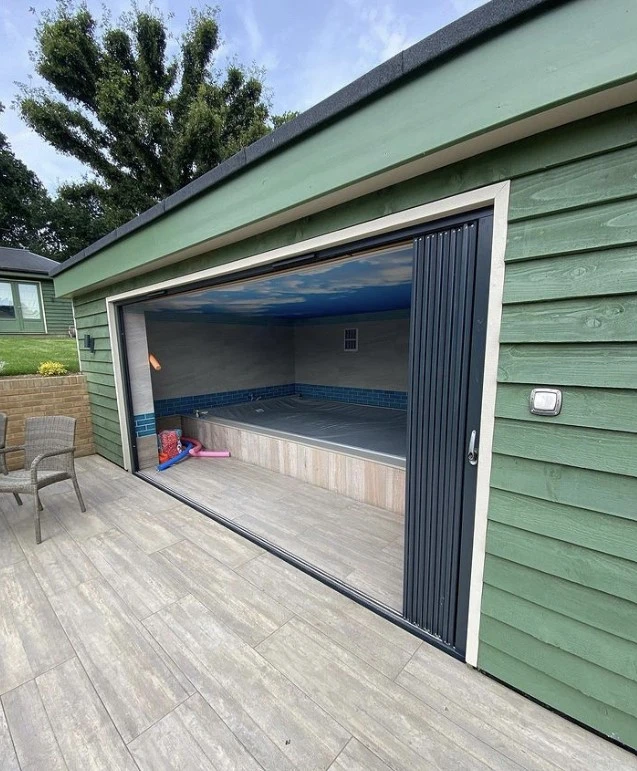
Security Technology in Modern Bifold Systems
Contemporary bifold doors integrate multiple security features without obvious external signs. Hook locks engage into reinforced keeps at multiple points along each opening edge, while anti-lift blocks prevent panels being forced upward out of their tracks. Toughened glass comes standard in modern units, with laminated options available for extra protection.
Key-operated handles include anti-snap cylinders and reinforced body sections, protecting against common attack methods. Contemporary bifolding doors often use three-star rated cylinder locks – the highest security rating currently available. The locking points engage automatically when the handle lifts, ensuring security even if someone forgets to use the key.
Internal glazing beads prevent glass removal from outside, while interlocking frame sections resist forced entry attempts. Modern testing standards require doors to resist sustained attack using various tools. The overall security rating depends on how long a door system resists specific types of interference.
Advanced magnetic contacts link contemporary folding doors to modern security systems, monitoring whether panels sit properly closed. These sensors detect slight movements before any actual breach occurs. Some systems include multiple sensor types – checking not just closed status but also proper engagement of locks and handles.
Contemporary Bifold Doors in Different Settings
Modern door systems must adapt to varied architectural contexts while maintaining their clean aesthetic appeal.
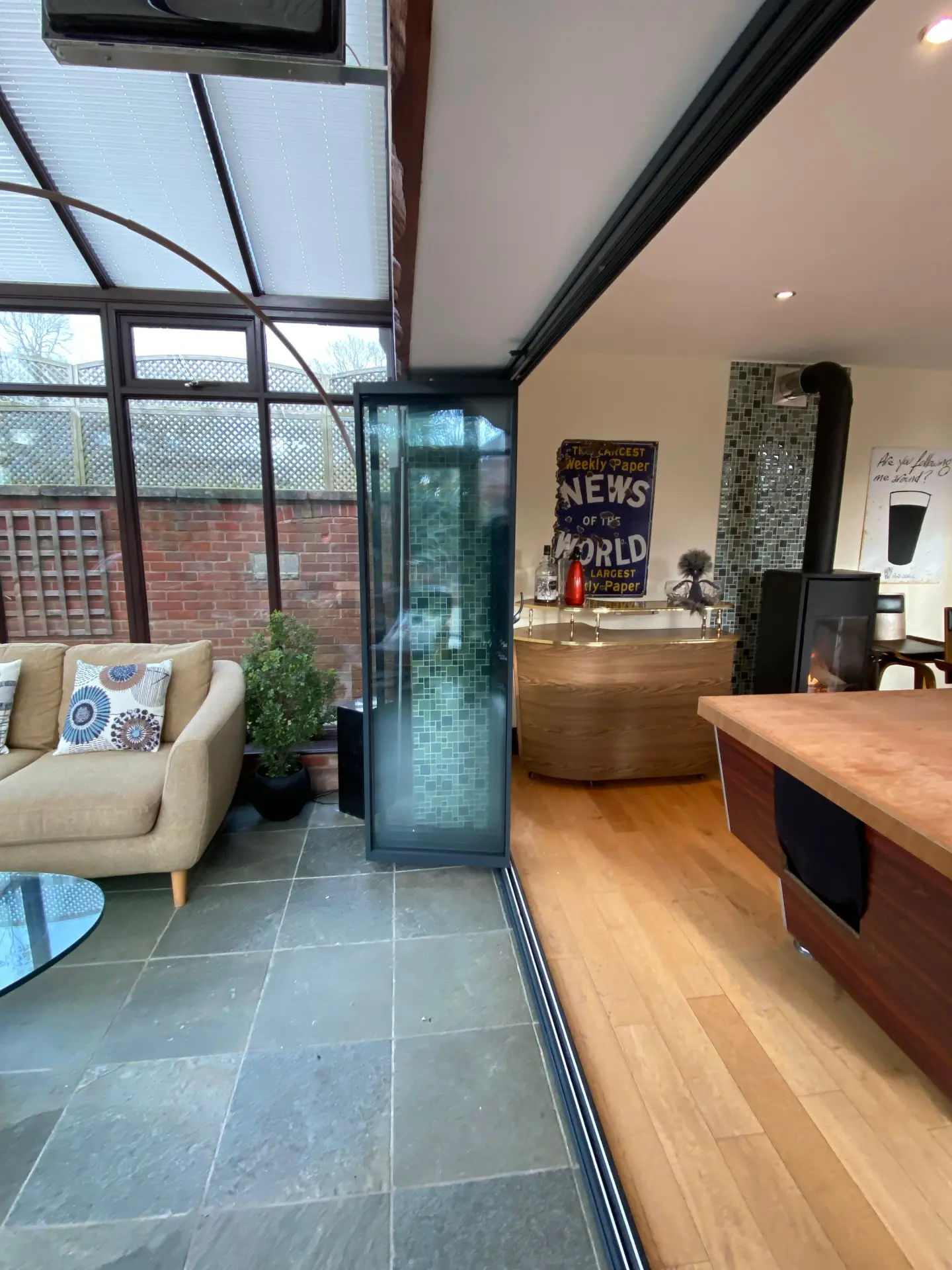
Open-Plan Living Spaces
Contemporary bifold doors suit large, open layouts where natural light takes priority. The minimal frame designs reduce visual barriers, with smooth operation even in wide openings. Glass panels stack neatly against walls when open, preserving valuable floor space.
Internal dividing walls present different challenges from external installations. Contemporary internal bifold doors need careful planning to ensure proper clearance and operation. Track systems can mount directly to ceiling joists, eliminating the need for visible support beams.
Room dividers using interior folding doors provide flexible space management without permanent walls. Modern track designs allow panels to park either left or right, or split from the centre. Glass options range from fully transparent to sandblasted patterns that provide privacy when needed.
Ventilation Control
Contemporary bi fold doors improve air circulation in open-plan areas. Top-opening vents built into the frame structure allow fresh air in while maintaining security. Panel configurations can be partially opened to manage airflow without compromising the room’s thermal balance.
Coastal Property Applications
Salt air poses unique challenges for contemporary bifold doors in maritime locations. Marine-grade powder coating provides extra protection against corrosion, with thicker layers than standard finishes. Special pre-treatment processes improve the coating’s adhesion to the metal surface.
Hardware choices become particularly important near the coast. Stainless steel rollers and hinges resist salt damage better than standard metals. Contemporary folding doors designed for coastal use incorporate additional drainage channels to cope with driving rain and sea spray.
Glass specifications change for oceanfront properties. Contemporary bifolding doors facing the sea often use laminated glass to withstand higher wind pressures. The lamination also blocks UV rays that can fade interior furnishings, while maintaining clear views to the water.
Industrial Style Integration
Raw metal finishes and exposed mechanics suit factory-inspired interior designs. Contemporary bifold doors with visible hardware elements add industrial character to converted spaces. Black steel-look frames complement exposed brick walls and concrete surfaces.
Track systems mounted to steel beams emphasise structural elements rather than hiding them. Contemporary bifold doors in warehouse conversions often feature larger panels than standard residential installations. The increased scale matches the proportions of industrial architecture.
Surface-mounted locks and handles in dark metal finishes complete the utilitarian aesthetic. Panel configurations can span entire wall sections, replicating original factory entrances. Glass treatments like metallic interlayers or wire mesh patterns reference industrial glazing techniques.
Modern Hardware and Practical Features
Contemporary bifold doors incorporate multi-point locking into streamlined handle designs. Magnetic catches hold panels in place when open without protruding hardware. Flush finger pulls integrated into the frame edge eliminate the need for additional handles on secondary panels.
Modern track systems use precision-engineered bearings to reduce operating force. Load-distributing rollers spread panel weight evenly across multiple wheels. Anti-derail features prevent panels lifting out of their tracks during operation.
Threshold options range from completely flat to weather-rated stepped designs. Low-profile tracks maintain accessibility while protecting against water ingress. Hidden drainage channels direct moisture away from interior spaces without visible gutters or grilles.
Modern Hardware and Practical Features
Advanced hardware systems in contemporary bifold doors prioritise smooth operation while maintaining clean visual lines.
Flush Threshold Options
Level floor tracks enable step-free access between spaces, meeting current accessibility standards. Contemporary bifolding doors use aluminium channels with integrated drainage, preventing water pooling without creating barriers. The track depth varies based on panel weight and size requirements.
Rebated thresholds offer extra weather protection for exposed locations. Modern track designs include hidden gutters that channel water away from interior floors. Contemporary bifold doors in coastal areas often incorporate raised thresholds with additional sealing points against wind-driven rain.
Ramped threshold adapters allow for different floor levels while maintaining accessibility. The slight incline meets building regulations for wheelchair access, with non-slip surfaces integrated into the ramp profile. Hidden fixings keep the modern living aesthetic clean and uncluttered.
Threshold Materials
Weather-resistant metals in the threshold prevent corrosion from repeated exposure to moisture. Contemporary folding doors use anodised finishes in high-traffic areas where powder coating might wear over time. Special thermal breaks within the threshold structure stop cold transferring through the metal sections.
Integrated Blind Systems
Magnetic operators control blinds sealed between glass panes in contemporary bifold doors. The cordless design improves safety while protecting the blinds from dust and damage. Remote-controlled options allow for automated opening and closing on timers or light sensors.
Pleated blind fabrics fold flat when raised, preserving views through the glass. Contemporary bi fold doors with integrated blinds use specially selected materials that resist heat damage between the panes. The sealed unit construction prevents condensation forming on the blind surfaces.
Slat designs offer precise light control through partial opening positions. The slats tilt and raise independently, providing different levels of privacy and shading. Modern metal slats reflect heat more effectively than fabric options, improving solar control during summer months.
Hidden Track and Hardware Design
Contemporary bifold doors conceal operating mechanisms within the frame profiles. Running gear sits behind removable covers for easy maintenance access. The following components typically hide from view:
- Track cleaning ports
- Hinge adjustment points
- Anti-lift blocks
- Drainage channels
- Lock mechanisms
Top-hung systems eliminate visible floor tracks entirely. Contemporary bifolding doors mounted this way require stronger head frames to support the panel weight. Steel reinforcement inside the frame cavity provides the necessary strength without visible bulk.
Engineers have refined roller designs to reduce operating noise. Contemporary folding doors glide on polymer-coated bearings that need no regular lubrication. The wheels’ diameter and profile shape determine how smoothly panels move along their tracks.
Modern hinges incorporate automatic closing actions. When pushed past certain points, panels draw themselves shut or open fully. Contemporary bifold doors use these mechanisms to prevent accidental slamming while ensuring complete closure every time.
About SunSeeker Doors
With over 20 years of experience, SunSeeker Doors remains at the forefront of door design with our quality-tested patio doors and related products, including the bespoke UltraSlim aluminium slide and pivot door system, Frameless Glass Doors, and Slimline Sliding Glass Doors. All of our doors are suitable for both internal and external use.
To request a free quotation, please use our online form. You may also contact 01582 492730, or email info@sunseekerdoors.co.uk if you have any questions.


